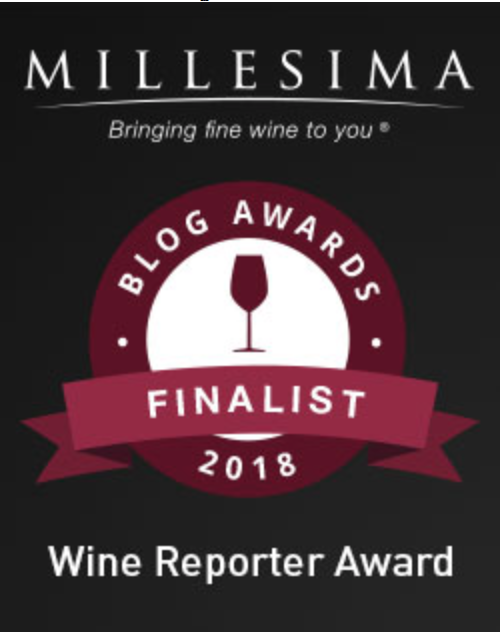I start off this post once again by mentioning the fact that I used to be a cycling tour guide. Why?
Good question.
The more I write about wine the more I realize that much of my appreciation of the beverage stems from my time abroad, riding around the (mostly French) countryside.
So what does riding around France have to do with an article about Rías Baixas, a decidedly Spanish region that produces a mouth-wateringly tart white wine?
Another good question.
The company where I worked had few hard and fast rules, but one was that the guide had to be proficient in the local language. We did not have any trips in Great Britain or Ireland, so that meant I was pretty much limited to France, Switzerland, and Belgium.
One of the trips, to the Basque region, encompasses two countries, France and Spain, requiring the trip leader to speak both those languages (yes, many people in the Basque region of France and Spain speak Basque, but let’s face it–no one else does). Once in a while, due to the logistics of transporting guides across the continent, I was “forced” to lead the French portion of the Basque trip (if you have ever been to St. Jean de Luz or Biarritz, you know what a “sacrifice” that was).
I would literally stop at the border, however, as the Spanish-speaking guide would arrive just in time to take the group into Donostia (or San Sebastián as most know it). On just a few occasions, though, my Spanish-speaking replacement would somehow get delayed (the Basques separatists still blow up railways from time to time) and I would get to lead the group into the capital city of the region (the only rule that supercedes the linguistic requirement is that a guide, no matter how linguistically challenged, is decidedly better than no guide).
It was in San Sebastián that I got my first real experience with Rías Baixas and Albariño. Sure, they throw back a ton of Txakoli there, but there is nothing better with the vast array of tapas available in the Parte Vieja than a tart glass of Rías Baixas. (A point of clarity: Rías Baixas is actually located in Galicia, the Western most area of Spain, just north of Portugal.)
For several weeks a couple of months ago, I relived my cherished time in San Sebastián through a series of online tastings hosted by the Queen of Online Tastings, Protocol Wine Studio. Each week, since the beginning of April, we have tasted a couple of Albariños from Rías Baixas in the comfort of our own homes.
If you consider yourself a wine drinker (even a “red only” type, which is dumb, but that is for another post) and you do not get all giddy when you open a bottle of Albariño, well, you are not even trying. So grab a bottle, get giddy, and join in the discussion tonight on Twitter (#winestudio), we start at 9 p.m. (East Coast time).
No more questions.
One week we focused on women winemakers, who make up close to 50% of all winemakers from the Rías Biaxas, a phenomenon that is only a couple of decades in the making. Why do I mention that? I am not sure since I would imagine that they would prefer to be judged on their wines and not their gender. Still, it is refreshing to know that part of the “Old World” is at the forefront of “new” possibilities for women.
 2014 Pazo Señorans Rías Baixas: Retail $22. One of the more tropical noses so far in the “course” that we have been taking from the fine people at Rías Baixas Wine, with plenty of guava and pineapple. On the palate, initially quite soft and supple, allowing those tropical notes to announce themselves nicely. It is not until the mid-palate that the acidity makes an appearance, but when it does, it takes center stage, becoming the star of the show, carrying the fruit with it all the way to the finish. Bravo. Outstanding. 91-93 Points.
2014 Pazo Señorans Rías Baixas: Retail $22. One of the more tropical noses so far in the “course” that we have been taking from the fine people at Rías Baixas Wine, with plenty of guava and pineapple. On the palate, initially quite soft and supple, allowing those tropical notes to announce themselves nicely. It is not until the mid-palate that the acidity makes an appearance, but when it does, it takes center stage, becoming the star of the show, carrying the fruit with it all the way to the finish. Bravo. Outstanding. 91-93 Points.
 2013 Lagar de Besada Baladiña Rías Baixas: Retail $23. Much more mineral than the Pazo Señoras with some stone fruit and lime. But it is the minerality that really seems to drive this wine both on the nose and on the palate. This is much more of a food wine, in my opinion, as the acidity pretty much drives the train, here. This wine causes me to search the room frantically for that dozen oysters that I knew I put somewhere. Very Good to Outstanding. 89-91 Points.
2013 Lagar de Besada Baladiña Rías Baixas: Retail $23. Much more mineral than the Pazo Señoras with some stone fruit and lime. But it is the minerality that really seems to drive this wine both on the nose and on the palate. This is much more of a food wine, in my opinion, as the acidity pretty much drives the train, here. This wine causes me to search the room frantically for that dozen oysters that I knew I put somewhere. Very Good to Outstanding. 89-91 Points.
The following week, I found myself out of the country, in the South of France, in fact. So what do I do? Do I just mail it in and drink some rosé? Heck no! I brought the following two wines with me, and shared it with a few Provençal friends of mine.
 2014 Tomada de Castro Rías Baixas: Retail $15. Under a synthetic stopper. An inviting golden-yellow color, and a lemony brightness on the nose. On the palate, round, even a bit too round. There are nice great citrus fruit flavors and weight here, but it really lacks the characteristic acidity I expect from a Spanish
2014 Tomada de Castro Rías Baixas: Retail $15. Under a synthetic stopper. An inviting golden-yellow color, and a lemony brightness on the nose. On the palate, round, even a bit too round. There are nice great citrus fruit flavors and weight here, but it really lacks the characteristic acidity I expect from a Spanish  Albariõ. Good to Very Good. 86-88 Points.
Albariõ. Good to Very Good. 86-88 Points.
2015 Bodegas Marqués de Vizhoja Torre la Moreira: Retail $20. Only the slightest color with aromas of pineapple, lemon, and even some quince. On the palate, this is a full-throttle Albariño with racing acidity and luscious fruit. I thought that some of the Rías Biaxas that I have tasted thus far on this wonderful WineStudio program, and I doubt this takes a back seat to any. Outstanding. 91-93 Points.







